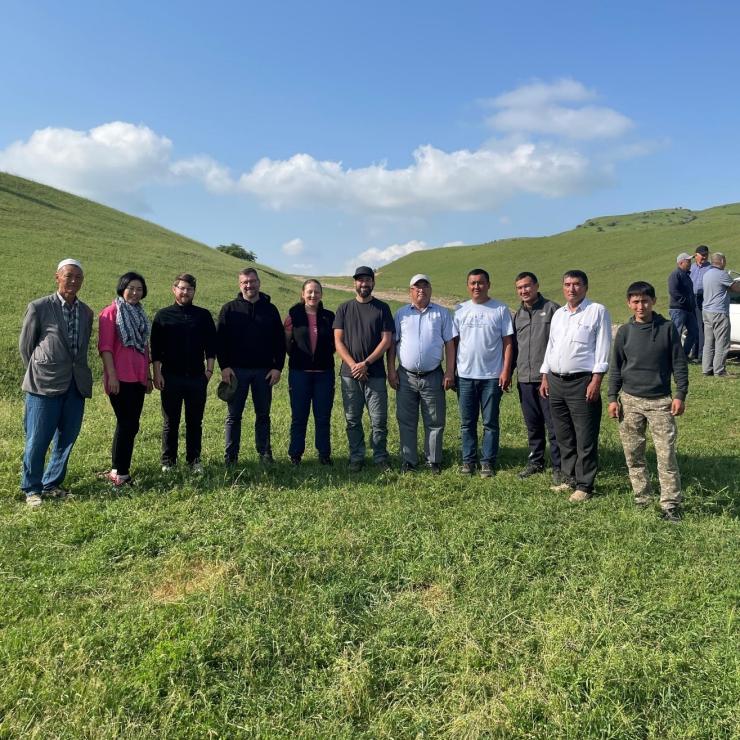

Locust-Tec: field campaign in South-Kazakhstan successfully completed
In May 2022 the “Locust-Tec”-Team was able to travel to the Turkistan Oblast in South-Kazakhstan and carry out important field surveys and tests during the development phase of the Marrocan locusts. The campaign was executed in areas with a high density of locust nymphs. In cooperation with the Kazakh partners and support of national and regional authorities, drones and a specially developed app that helps collect data digitally were used and tested under real conditions. Under these circumstances it was also possible to work on the prototype of the electrical grid.

The usage of drones enhances the efficiency of localising locusts and their propagation. Specifically, the accumulation of Marrocan locust nymphs is easily detectable by drones, because of the locust’s dark colour that stands in stark contrast to the ground. Apart from the accumulation of nymphs (in so called ties and groups) drones can also detect affected areas with damaged vegetation. With the help of digital image processing those areas are easily and efficiently detected and their locations are transmitted to the control-teams afterwards.
Even though the use of satellite- and drone data is a great help, the monitoring on the ground by experts is still the most important component of locust surveillance. Exact position, number of locusts per m², their size and development state as well as other qualitative and quantitative parameters have to be measured. To facilitate those tasks and make the data less prone to errors the SuN-mobile app was designed. The app is also part of the “Locust-Tec”-project and was developed in close collaboration with local experts. It was further established during the field campaign and proved that a digital data collection not only simplifies digitalization but also makes the monitoring, new analysis and relevant conclusions much easier in the long term.


At the moment, locust populations or outbreaks are controlled and combated by using specific pesticides. Although those are highly effective the negative effects on the environment and health cannot be neglected. This is why the “Locust-Tec”-project tries to test the environment-friendly alternative of the electricity grid. The first prototype shows potential to be used in protected areas, but is not yet ready for large-scale usage. When further developed, the grid could possibly be combined with less polluting methods as well such as bio-pesticides. That way the amount of chemicals used in sensitive and worth of protecting areas could be minimized or even avoided completely.
Locust outbreaks in various parts of Europe continue to accumulate in 2022. On the Italian island Sardinia there is already the fourth outbreak in a row at which thousands of hectares of agricultural land were damaged. Reason for the outbreaks of the Marrocan locust (dociostaurus maroccanus) is the land-use change combined with the continuing drought. In the Rumanian region Tulcea there is a current outbreak of the european locust (locusta migratoria) which strains the local farmers and communities in addition to the drought. As a consequence of climate change and the continuing land-use change, many more regions worldwide will have to face diverging sizes of locust outbreaks in the future. In many countries mechanisms for monitoring and combating is already part of the so-called locust-management to control the ongoing dangers. Therefore, the locust management in the Central Asian country of Kazakhstan is one of the key-elements of the “Locust-Tec”-project that is promoted by the Federal Ministry of Education and Research (BMBF) as part of the CLIENT-II-programme (international partnership for sustainable innovation). The mapping of endangered areas, regular and standardised field surveys of the local locust population and their condition as well as timely combat if needed have been part of the main tasks of the locust management for year. The “Locust-Tec”-project examines new possibilities and supports the implementation of innovative technology and environment-friendly alternatives of locust combat.
You can find more information on the project here: https://locust-tec.eoc.dlr.eng/
